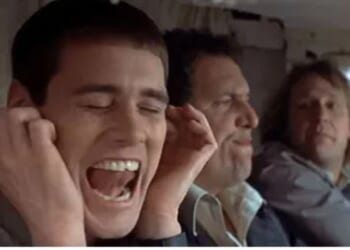Cracker Barrel’s recent logo redesign has sparked a heated debate, with many critics quick to call it just another example of “woke” branding. The company removed its iconic barrel and chair-sitting man from the logo, opting instead for a cleaner, simpler look. It’s clear that the leadership behind this change embraces progressive politics, but is this redesign really just about provoking outrage from conservatives? Or is it part of a broader, more complex business and cultural trend?
Logo simplification is hardly unique to Cracker Barrel, and it’s not a new phenomenon. For years, brands have been stripping away intricate details in favor of minimalism. This is more than Land O’ Lakes removing the Indian woman from their butter packaging but keeping the land. It may be a cultural sensitivity response, but it is also one that aligns with modern branding trends. Pepsi has simplified its logo repeatedly over time, and Wendy’s has continually refined its image to stay relevant. Internet Explorer turned its “e” logo into a blue and green swirl. Firefox dropped the fox from its logo. Google lost the serif in its font, and Netflix dropped the “etflix” and went with a simple, red “N” instead. McDonald’s simplified until all that was left was its yellow “M,” and Burger King has moved to a flatter, cleaner look, removing shadows and extra elements.
Genuinely begging companies to stop doing this logo simplification crap. https://t.co/Cphai3JZy3
— TheDeltaAgent (@TheDeltaAgentNC) August 21, 2025
The wave of logo simplification extends beyond just visual aesthetics; it reflects a significant shift in how brands communicate with their customers in a digital world. Logos need to be versatile and recognizable, whether they appear as tiny icons on smartphones, app thumbnails, or giant billboards. Complex, detailed logos that looked good in print or on storefronts decades ago often don’t translate well to digital formats where space and attention are limited — and they’re likely more expensive.
Is the simplification of brand logos part of the same cultural shift, where visual restraint reflects a broader trend toward uniformity?
Beyond practical considerations, there’s a cultural undercurrent that’s harder to quantify but no less real. Think about how expressive and unique cars were in the 1960s and 1970s — bold colors, distinctive shapes, chrome details — each model had a personality. Fast forward to today, and the majority of cars are white, black, or gray with design choices that prioritize efficiency and uniformity over individuality. It’s as if the physical world is becoming more utilitarian, less about personal expression and more about fitting into a standardized mold. Is the simplification of brand logos part of the same cultural shift, where visual restraint reflects a broader trend toward uniformity? (RELATED: When Cars Were Cars — And Cup Holders Held Cups)
Interestingly, this trend coincides with a digital culture where people are often louder and more expressive about their identities than ever before. Social media platforms are pumped full of personal branding, political debates, and cultural expression. Yet, in contrast, the physical and commercial world — the logos on the products, the design of restaurants like Cracker Barrel, and even our cars — seems to be moving in the opposite direction toward minimalism and less visual noise. This paradox raises questions: Are companies simplifying logos in response to customer demand, or are they anticipating what they think customers want? Is this about meeting the expectations of a digital-first culture or shaping those expectations?
Cracker Barrel stock is suffering under a stupid DEI push. It started with the new CEO claiming the ‘rebrand’ was overwhelmingly positive. But numbers don’t lie. It was a stupid move because it represents an attack upon its customer base. pic.twitter.com/3Q7d4bA7JJ
— Jim Pfaff (@jimpfaff) August 21, 2025
Cracker Barrel’s leadership has stated that its redesign is about enhancing the brand experience through restaurant remodels and a refreshed menu. But if these additional changes are received the same way as the new logo reveal — which was followed by a $94 million plunge in market value — then Cracker Barrel might want to ask itself these questions.
Nonetheless, Cracker Barrel stood by its shift in style. Chief Marketing Officer Sarah Moore said in a statement, “We believe in the goodness of hospitality, a spirit that has always defined us. Our story hasn’t changed. Our values haven’t changed.”
The company’s logo and aesthetic have long been tied to a particular nostalgic, homey image that customers connected with emotionally. Stripping away those details can feel like erasing history, even if the company’s intention is to modernize.
But Cracker Barrel’s customers are aging out, and they are not being replaced. The restaurant has faced a post-COVID slump in its struggle to stay open, battered by inflation and competition. In 2023, Cracker Barrel brought in CEO Julie Felss Masino, the same thick-glasses-wearing leftist who conservatives are blaming for the downfall of the brand. But Masino is not the cause of Cracker Barrel’s decline; she was likely a last-ditch effort to salvage the company.
Clearly, this new CEO is not doing a good job. Now, Cracker Barrel has turned off its old customers with this rebrand — and what new target audience could this media frenzy possibly attract for in-store dining?
Cracker Barrel CEO Julie Masino should face charges for this crime against humanity pic.twitter.com/auBFPi4bpr
— End Wokeness (@EndWokeness) August 21, 2025
Cracker Barrel likely brought in new leadership to be a change-maker like this. Hey, they’re in the news. But bad publicity isn’t good publicity. And while Cracker Barrel wasn’t doing well before the logo change, this isn’t necessarily reflective of the brand itself. People simply aren’t going to restaurants like they used to, especially in the aftermath of COVID. The rebrand might have inadvertently made the situation worse by removing the nostalgic appeal that was a core part of Cracker Barrel’s identity. Ultimately, this redesign likely won’t reverse the larger trend of people preferring food delivery and avoiding real-life dining experiences.
At least the new Cracker Barrel logo is honest about one thing: the man in the chair is gone from their restaurant.
READ MORE from Julianna Frieman:
CALIFORNIA’S CAPSLOCK CRUSADER
NFL Tries Male Cheerleaders. That’s the Left’s Plan to Win Back Men?
Why Is Every Brand Suddenly Acting Like a Taylor Swift Superfan?
Julianna Frieman is a writer based in North Carolina. She received her bachelor’s degree in political science from the University of North Carolina at Charlotte. She is pursuing her master’s degree in Communications (Digital Strategy) at the University of Florida. Her work has been published by the Daily Caller, The American Spectator, and The Federalist. Follow her on X at @juliannafrieman.







![Florida Man With Violent History Arrested for Choking a Cop [WATCH]](https://www.right2024.com/wp-content/uploads/2025/06/Eleven-Stabbed-in-Attack-at-Salem-Homeless-Shelter-Across-From-350x250.jpg)







